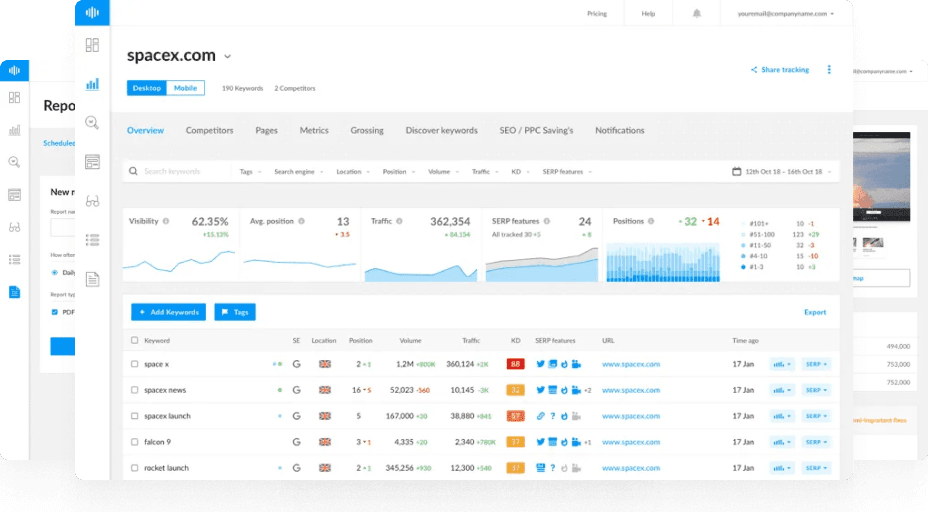What are Google AI Overviews?
AI Overviews are an AI-powered feature in Google Search that automatically generates concise summaries to answer complex or multi-step queries. Instead of simply listing ten blue links, Google’s AI synthesizes information from multiple web pages to create a cohesive overview, often displayed at the very top of the results page.
AI Overviews began rolling out in 2024 (initially under the Search Generative Experience, or SGE) and became a core part of how Google presents information in 2025. The goal is to help users “get answers faster” while still giving them the option to explore cited sources.
When you search for something like “how to optimize images for faster site loading,” Google’s AI Overview may display a short paragraph explaining key techniques (compression, next-gen formats, lazy loading), with source links below — giving credit to the sites that informed the response.
How Do AI Overviews Work?
AI Overviews rely on Google’s large language models (LLMs), trained on a mixture of high-quality web data, licensed sources, and human feedback.
These models:
- Understand a query’s intent using natural language processing (NLP).
- Retrieve relevant documents from Google’s index.
- Summarize the main takeaways into a concise, human-readable paragraph.
- Attribute key points to specific web pages as clickable citations.
The Overview is dynamically generated for each query, meaning it may evolve as new content appears or as Google updates its models.
Why Are AI Overviews Important for SEO?
AI Overviews represent one of the most significant shifts in Google Search since the introduction of featured snippets. While they improve user experience, they also change how organic visibility works.
1. Visibility at the Top of SERPs
AI Overviews sit above standard organic listings — often absorbing a large portion of user attention. Getting cited here can significantly increase traffic and credibility.
2. Citation Opportunities
Sites featured as sources in AI Overviews gain attributed links, similar to those in traditional featured snippets, but within richer, AI-written summaries.
3. Changing Click Patterns
Because many users find their answer directly within the Overview, fewer may scroll to traditional results. This trend — known as the zero-click effect — means publishers need to optimize for inclusion and citation, not just ranking.
4. Content Quality Signals
Google favors pages with clear, trustworthy, and well-structured information. Pages demonstrating E-E-A-T (Experience, Expertise, Authoritativeness, and Trustworthiness) are more likely to be selected.
How to Optimize for AI Overviews
While there’s no direct markup or setting to guarantee inclusion, several strategies can increase your chances:
1. Provide Clear, Factually Accurate Answers
Ensure your content gives direct, structured answers to search queries. Use descriptive headings, numbered steps, and short paragraphs.
2. Strengthen E-E-A-T Signals
Include author bios, source citations, and evidence-based claims. Google’s models weigh credibility heavily when choosing citation sources.
3. Use Structured Data
Implement schema markup (e.g., FAQPage, HowTo, Organization, Person) to help Google understand your content contextually.
4. Keep Content Up to Date
AI Overviews prefer fresh content, especially for time-sensitive topics. Regularly review and refresh key pages.
5. Build Semantic Depth
Cover related entities and subtopics naturally. Google’s AI looks for contextual completeness, not just keyword matching.
Common Concerns and Misconceptions
-
“AI Overviews will replace traffic.”
Not entirely — while they reduce clicks for some queries, they also introduce new visibility paths via citations and brand mentions. -
“You can’t influence AI Overviews.”
You can’t control them directly, but you can influence selection probability through content quality, factual accuracy, and structured presentation. -
“Every query will show an Overview.”
No — Google only displays them when the query requires synthesis or context, not for every keyword.
Summary
Google AI Overviews redefine how users interact with search results. For SEOs, the focus shifts from chasing rank positions to earning citations within AI-driven summaries. The best approach is to produce credible, well-structured content that demonstrates real expertise — and is easy for both humans and AI to understand.
